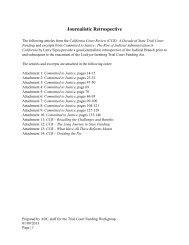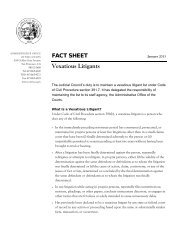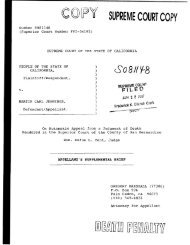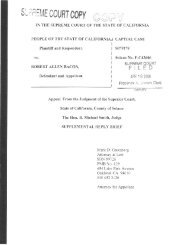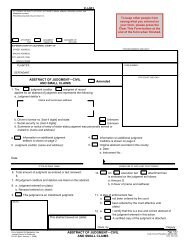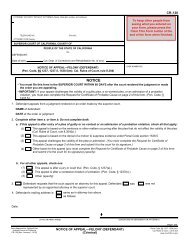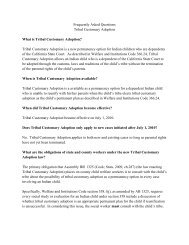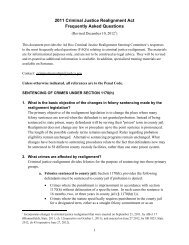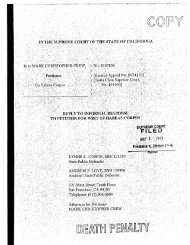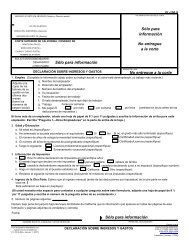Appellant, William Satele, Reply Brief - California Courts - State of ...
Appellant, William Satele, Reply Brief - California Courts - State of ...
Appellant, William Satele, Reply Brief - California Courts - State of ...
Create successful ePaper yourself
Turn your PDF publications into a flip-book with our unique Google optimized e-Paper software.
Unless this incident can be traced to racial animosity, it has no relevance.<br />
<strong>Appellant</strong> was allegedly involved in an altercation with an Asian inmate, and there<br />
were no racial epitaphs spoken or other evidence <strong>of</strong> a racial motive as to the<br />
incident in issue here. Therefore, it was mere speculation to attribute a racial<br />
motive in this particular altercation to appellant. (See AOB at p. 194.)<br />
Because Evidence Code section 352 requires a balancing <strong>of</strong> the probative<br />
value <strong>of</strong> the evidence against its prejudicial effect, respondent's failure to address<br />
the actual probative value <strong>of</strong> the evidence dooms his argument. Respondent's<br />
conclusion that the evidence was necessary to rebut appellant's defense evidence<br />
that he was not hostile to African-Americans is necessarily flawed because half <strong>of</strong><br />
the equation - the probative nature - was never analyzed.<br />
Respondent argues that appellant was not prejudiced by this evidence<br />
because he had been charged with killing people in a drive-by shooting, an act<br />
more violent than the alleged assault. (RB at p. 129.) However, the fact that the<br />
alleged crime was more egregious than the improper character evidence does not<br />
negate the fact that a jury may be prejudiced by the evidence in question. The<br />
jury's job was to determine whether appellant committed the murders.<br />
Presumably, at the time the improper evidence was introduced, the jurors had not<br />
made up their minds about the charged <strong>of</strong>fense. The assault evidence created an<br />
image <strong>of</strong> appellant as a violent racist. The inferences drawn by the jurors from<br />
such evidence influenced the jurors to conclude that it was more likely that<br />
appellant committed the murder than they would have been had the evidence not<br />
been introduced. Therefore, the fact that the murder was more serious than the<br />
character evidence did not negate the prejudicial impact <strong>of</strong>that evidence.<br />
In conclusion, the erroneous introduction <strong>of</strong> this evidence was prejudicial t<br />
appellant, thereby requiring a reversal <strong>of</strong> the judgment <strong>of</strong> conviction entered<br />
below.<br />
98



